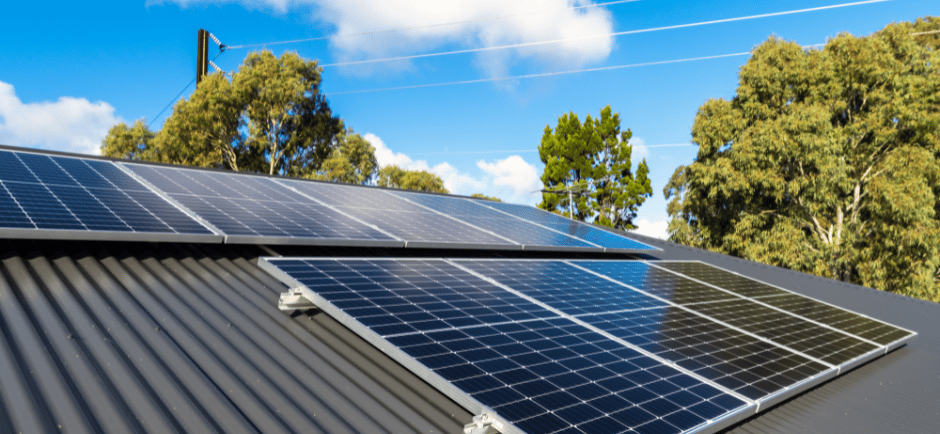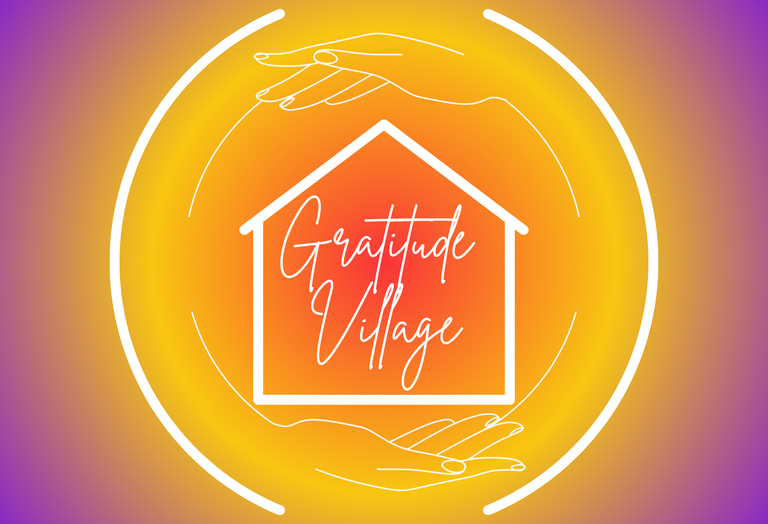Happy Holidays from Everyone at Gratitude Village!
Green Building Techniques in Cohousing: Sustainable Living for a Better Future
In this blog, we'll explore how various green building techniques, such as modular construction, Insulated Concrete Forms (ICFs) vs. Structural Insulated Panels (SIPs), green roofs, metal roofs, low-maintenance siding, heat pumps, and more, can be integrated into cohousing developments to create homes that are not only eco-friendly but also foster a strong sense of community.
Gratitude Village
12/15/20246 min read


Green Building Techniques in Cohousing: Sustainable Living for a Better Future
As the global focus on sustainability continues to grow, the construction industry is increasingly adopting green building techniques to reduce environmental impact, enhance energy efficiency, and create healthier living spaces. These techniques incorporate innovative materials, design strategies, and technologies that minimize resource consumption and promote long-term sustainability. Cohousing communities are intentionally designed neighborhoods where residents collaborate to create sustainable, vibrant living spaces. The principles of green building align perfectly with the ethos of cohousing, where environmental responsibility, resource efficiency, and community well-being are prioritized. In this blog, we'll explore how various green building techniques, such as modular construction, Insulated Concrete Forms (ICFs) vs. Structural Insulated Panels (SIPs), green roofs, metal roofs, low-maintenance siding, heat pumps, and more, can be integrated into cohousing developments to create homes that are not only eco-friendly but also foster a strong sense of community.
Modular Building Methods: Efficiency and Sustainability Combined for Cohousing Communities
Modular building, also known as systems-built construction, is an ideal method for creating cohousing communities that are both sustainable and cost-effective. By prefabricating building components in a factory setting, modular construction reduces waste, improves energy efficiency, and shortens the construction timeline—all of which are critical for cohousing developments where multiple homes are built simultaneously. In a cohousing community, modular construction offers many benefits:
Waste Reduction: Since modular components are manufactured in a controlled environment, there's significantly less material waste compared to on-site construction. Any leftover materials can be reused or recycled more efficiently in a factory setting.
Energy Efficiency: Modular buildings are often constructed with precision, leading to tighter seals and better insulation, which enhances energy efficiency. The factory-controlled environment also allows for more stringent quality control, ensuring that each module meets high standards for energy performance.
Faster Construction Time & Community Input: Modular construction can reduce the overall time needed to complete a project, minimizing the environmental impact of on-site work. Shorter construction times also mean less energy is consumed by machinery and fewer emissions are produced. Because modular construction is faster, it allows residents to move into their homes more quickly and begin cultivating their community. Residents can be involved in the design process, ensuring that the layout and features of the community reflect their collective values and needs.
Shared Spaces: Modular techniques can be used to efficiently construct shared facilities, such as common houses, workshops, and community kitchens, which are central to cohousing living.
ICF vs. SIP: Building Energy-Efficient Homes in Cohousing
Cohousing communities often prioritize energy efficiency to reduce environmental impact and lower utility costs for residents. Insulated Concrete Forms (ICFs) and Structural Insulated Panels (SIPs) are two green building systems that can be used to achieve these goals.
Insulated Concrete Forms (ICFs) in Cohousing
ICFs provide a robust, energy-efficient solution for constructing homes in cohousing communities. ICFs are hollow blocks or panels made of rigid foam that are stacked to form the shape of a building's walls. Once in place, the forms are filled with concrete, creating a solid, insulated wall. The excellent insulation properties of ICFs ensure that homes stay warm in the winter and cool in the summer, reducing the need for heating and cooling.
Energy Efficiency: ICF walls provide superior insulation, resulting in a high R-value (a measure of thermal resistance) and reduced energy consumption for heating and cooling.
Durability: The combination of concrete and foam makes ICF structures highly durable, resistant to fire, pests, and natural disasters.
Thermal Mass: The concrete in ICF walls acts as a thermal mass, absorbing and slowly releasing heat, which helps to stabilize indoor temperatures and further reduces energy use.
Community Resilience: ICF homes are highly durable and resistant to natural disasters, ensuring that the community remains safe and secure in the face of extreme weather.
Comfort and Quiet: The soundproofing qualities of ICFs contribute to a peaceful living environment, which is especially important in a close-knit community where homes are often built close together.
Structural Insulated Panels (SIPs) in Cohousing
SIPs are another excellent option for building energy-efficient homes in cohousing communities. SIPs are prefabricated panels made of an insulating foam core sandwiched between two structural facings, typically oriented strand board (OSB). Their high R-values and airtight construction minimize energy loss, making them ideal for sustainable living.
Energy Efficiency: SIPs offer high R-values and create a tight building envelope, minimizing air leaks and enhancing energy efficiency.
Quick Assembly: SIPs are lightweight and can be quickly assembled on-site, speeding up the construction process, reducing labor costs and allowing residents to move into their homes sooner.
Strength and Stability: SIPs are structurally strong and can support considerable loads, making them suitable for a wide range of building types.
Environmental Impact: SIPs are often made with sustainable materials and can significantly reduce a building's carbon footprint, and their energy efficiency contributes to the overall sustainability of the community.
Green Roofs: Enhancing Community Spaces and Bringing Nature to Urban Spaces in Cohousing
Green roofs, also known as living roofs, are roofs that are partially or completely covered with vegetation, providing numerous environmental and aesthetic benefits. They are a popular feature in cohousing communities, where they serve both environmental and social functions. These living roofs not only improve energy efficiency but also provide communal green spaces where residents can gather and relax.
Energy Efficiency: Green roofs act as natural insulators, reducing the need for heating in winter and cooling in summer. This leads to lower energy bills and reduced carbon emissions.
Stormwater Management: Green roofs absorb rainwater, reducing runoff and helping to prevent flooding in urban areas.
Biodiversity: Green roofs provide habitat for birds, insects, and other wildlife, contributing to urban biodiversity.
Air Quality: Vegetation on green roofs can improve air quality by filtering pollutants and capturing airborne particulates.
Urban Heat Island Effect: By absorbing heat rather than reflecting it, green roofs help to mitigate the urban heat island effect, cooling cities naturally.
Shared Garden Spaces: In cohousing communities, green roofs can be used as communal garden spaces, offering residents a place to grow vegetables, herbs, and flowers.
Social Interaction: Green roofs create beautiful, natural spaces where residents can meet, hold events, or simply enjoy the outdoors together, strengthening community bonds.
Metal Roofs: Durable, Eco-Friendly and Sustainable for Cohousing
Metal roofs are an excellent choice for cohousing communities, offering long-term durability, energy efficiency, recyclability and low maintenance—all of which contribute to the sustainability of the community. Benefits cohousing communities find appealing include:
Long-Lasting Protection: The longevity of metal roofs, up to 50 years, reduces the need for replacements and repairs, lowering the community's overall environmental footprint.
Energy Savings: Metal roofs reflect solar radiation, keeping homes cooler in the summer and reducing the community’s collective energy consumption.
Recyclability: Metal roofing materials are often made from recycled content and can be fully recycled at the end of their life cycle.
Aesthetic Cohesion: Metal roofs come in a variety of colors and finishes, allowing the community to maintain a cohesive and attractive appearance that reflects their shared identity.
Fire Resistance: Metal roofs are non-combustible, providing added protection against fire hazards.
No Maintenance Siding: Sustainable, Attractive, and Low-Maintenance
Cohousing communities benefit from using low-maintenance siding materials, such as stucco, fiber cement or engineered wood, which offer durability and sustainability while reducing the need for regular upkeep. Some of their benefits include:
Durability: These materials are resistant to pests, rot, and weather damage, extending the life of the siding and reducing the need for replacements.
Low Maintenance: As the name suggests, no maintenance siding requires little to no upkeep, reducing the need for painting, sealing, or repairs.
Community Projects: By choosing low-maintenance siding, cohousing communities can focus their efforts on more meaningful community projects rather than ongoing home maintenance.
Sustainability: Many low-maintenance siding options are made from recycled materials, contributing to the community’s overall sustainability goals.
Visual Unity: Consistent siding materials can create a unified aesthetic across the community, reinforcing the sense of belonging and shared purpose among residents.
Heat Pumps: Efficient Heating and Cooling for Cohousing
Heat pumps are a key component of energy-efficient homes in cohousing communities, providing both heating and cooling with minimal energy use. Their benefits include:
Energy Efficiency: Heat pumps transfer heat rather than generate it, making them far more efficient than traditional heating and cooling systems. They can reduce energy consumption by up to 50%.
Versatility: Heat pumps can provide both heating and cooling, eliminating the need for separate systems.
Environmental Impact: By using less energy, heat pumps contribute to lower greenhouse gas emissions. They can also be powered by renewable energy sources such as solar or wind for an even smaller carbon footprint and aligning with the community's commitment to sustainability.
Year-Round Comfort: Heat pumps maintain consistent indoor temperatures and provide a high level of comfort year-round.
Shared Systems: In some cohousing communities, heat pumps can be installed as part of a shared energy system, reducing costs and promoting collective responsibility for energy use.
Building a Sustainable Future Together
Green building techniques are not just about creating environmentally friendly homes—they are about fostering a way of life that prioritizes sustainability, community, and well-being. In cohousing communities, these techniques take on added significance, as they help create living environments that support both the planet and the people who inhabit it. By embracing modular construction, energy-efficient building systems like ICFs and SIPs, green roofs, metal roofs, low-maintenance siding, heat pumps, and other green building practices, cohousing communities can lead the way in sustainable living. These communities demonstrate that it’s possible to live in harmony with the environment while fostering strong social connections and a high quality of life for all residents.
COMMUNITY
Join us in embracing nature, diversity and connection.
Sustainability
DIVERSITY
info@gratitudevillageco.com
720-689-4821
© 2025. All rights reserved.
AFFORDABILITY
Gratitude Village Inc. is a 501(c)3 charitable corporation that values diversity, equity, and inclusion as essential to our mission
Subscribe to our Substack
Refund Policy




Gratitude Village is a Proud Member of these organizations
